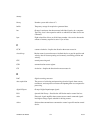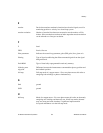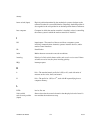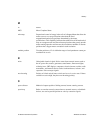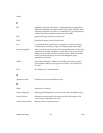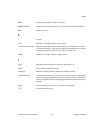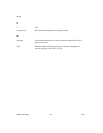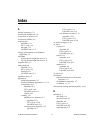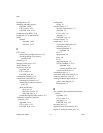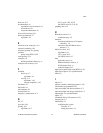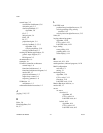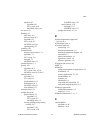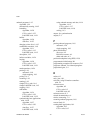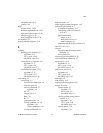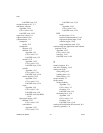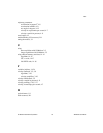Index
© National Instruments Corporation I-7 NI-Motion User Manual
LabVIEW code, 16-4
solution, 16-1
RTSI
encoder pulses, 12-39
hardware implementation, 12-38
high-speed capture input, 12-40
software trigger, 12-39
using breakpoints with, 12-39
run sequence, 8-1
running onboard programs, 14-8
S
scanning
blending move segments, 15-7
algorithm, 15-8
C/C++ code, 15-10
LabVIEW code, 15-9
connecting move segments, 15-1
algorithm, 15-2
C/C++ code, 15-4
LabVIEW code, 15-3
user-defined scan path, 15-13
algorithm, 15-15
C/C++ code, 15-17
LabVIEW code, 15-16
servo tuning, 3-1
control loop, 3-2
acceleration feedforward, 3-6
derivative gain, 3-5
dual loop feedback, 3-7
algorithm, 3-8
Ga, 3-7
integral gain, 3-4
Kdac, 3-6
Kt, 3-7
proportional gain, 3-4
velocity feedback, 3-5, 3-9
algorithm, 3-10
velocity amplifiers, 3-10
velocity feedforward, 3-5
shake and wake, A-1
single-stepping onboard programs, 14-9
sinusoidal commutation, A-1
commutation frequency, A-2
determining counts per electrical
cycle, A-2
phase initialization
direct set, A-2
Hall effect sensors, A-1
shake and wake, A-1
troubleshooting Hall effect sensors, A-3
slave axis, 10-1, 10-4
software
interaction with NI motion control
hardware, 1-2
NI resources, D-1
software trigger using RTSI, 12-39
software/hardware interaction, 1-2
speed control, 13-14
algorithm, 13-14
C/C++ code, 13-16
LabVIEW code, 13-15
spherical arc move, 6-7
algorithm, 6-9
C/C++ code, 6-10
LabVIEW code, 6-10
start angle, 6-2
status display, 4-14
stopping onboard programs, 14-8
straight-line move
position-based, 5-1
algorithm, 5-2
C/C++ code, 5-5
LabVIEW code, 5-3
velocity profiling using velocity
override, 5-17
algorithm, 5-18
C/C++ code, 5-20
LabVIEW code, 5-19
velocity-based, 5-10
algorithm, 5-11



